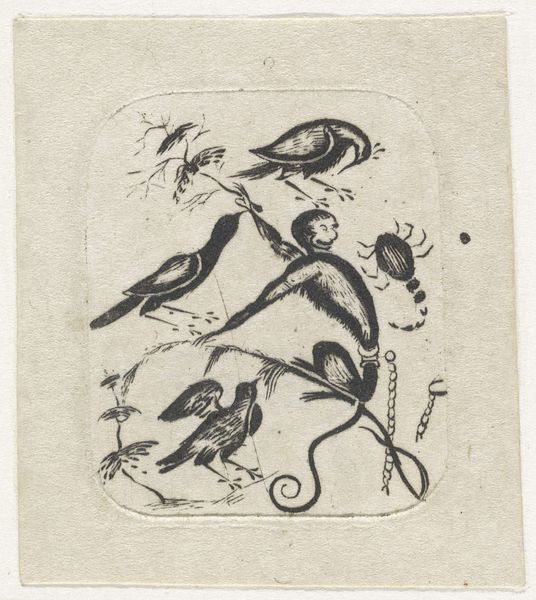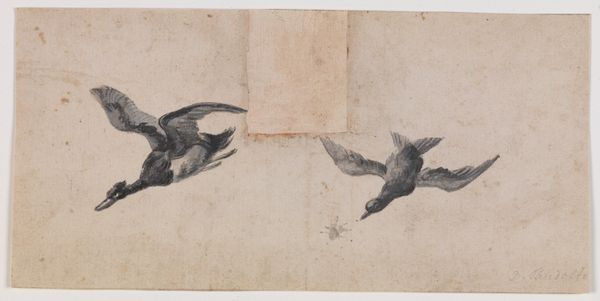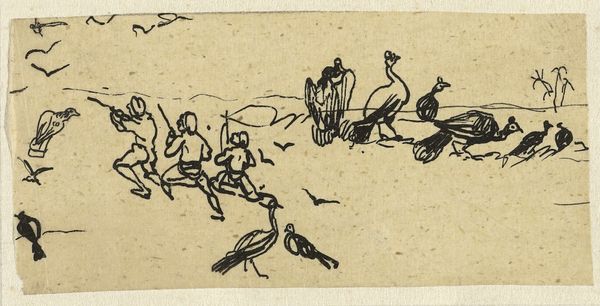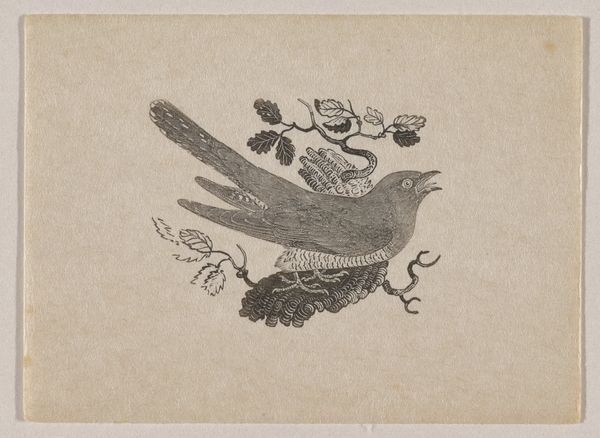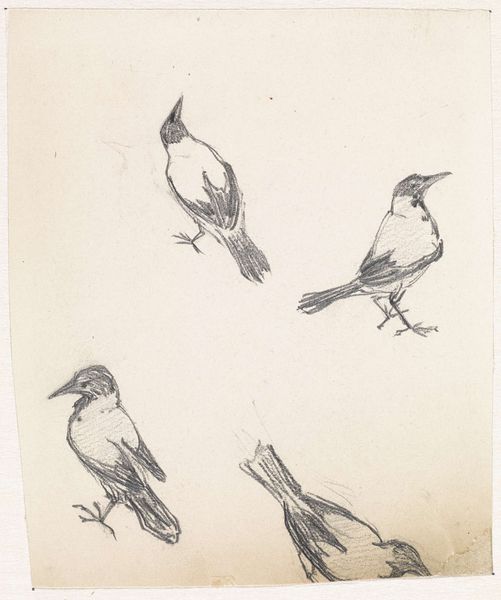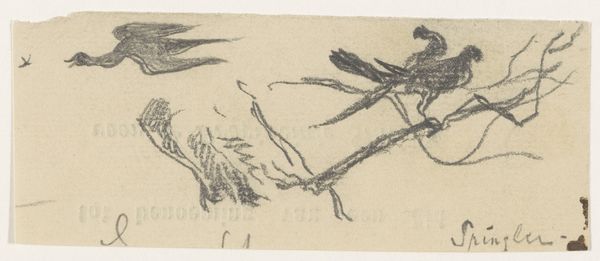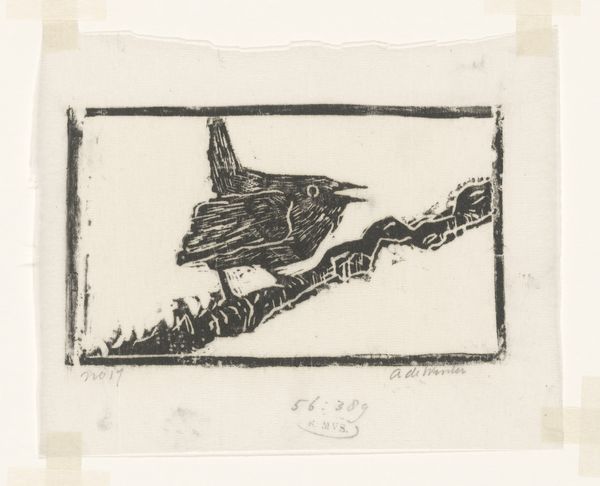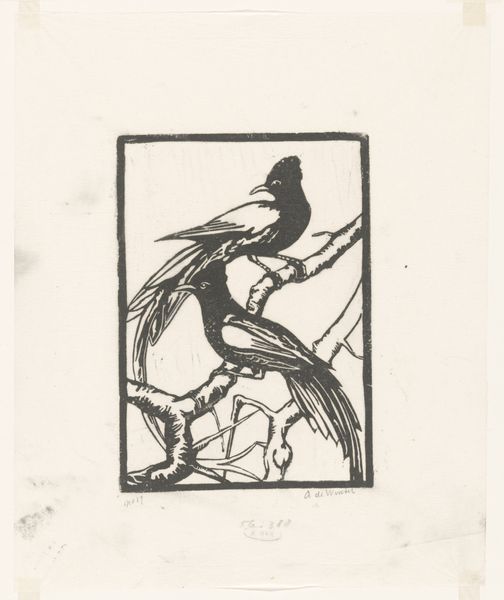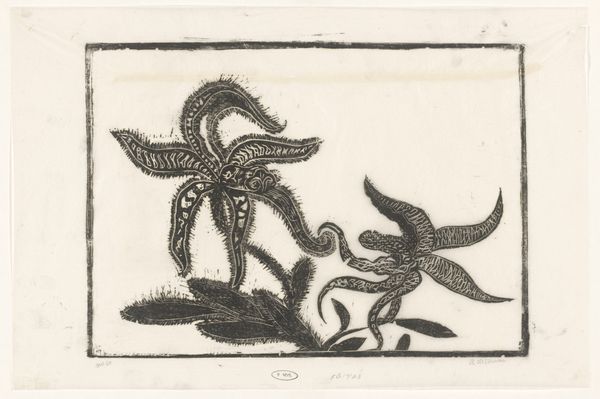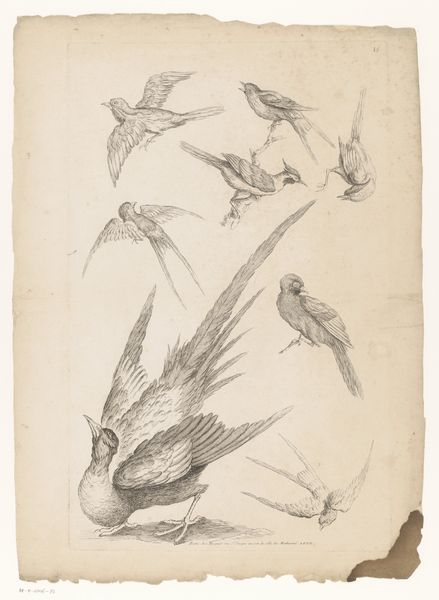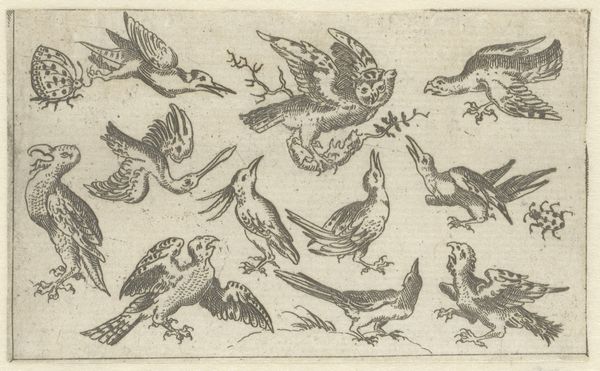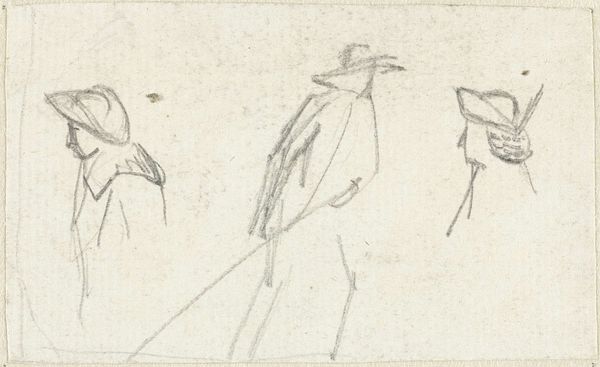
drawing, etching, ink, pen
#
drawing
#
baroque
#
animal
#
etching
#
old engraving style
#
bird
#
figuration
#
ink
#
pen-ink sketch
#
pen
Dimensions: height 13 mm, width 30 mm
Copyright: Rijks Museum: Open Domain
Curator: This delicate work is entitled "Twee vogels," which translates to "Two Birds," attributed to Isaac Walraven, dating sometime between 1696 and 1765. It appears to be rendered in pen and ink, utilizing an etching technique. Editor: It possesses an appealing simplicity, wouldn't you agree? The monochromatic palette highlights the subtle dynamism of the subjects. There’s something about the linear quality that evokes immediacy. Curator: Indeed. Examining Walraven’s methods, we observe how the application of pen and ink informs the aesthetic, giving prominence to form through line work. This etching is most likely reproduced as a commodity for wider circulation and consumption, indicative of shifts in art accessibility during that era. Editor: And considering the era in which Walraven produced this image, I cannot help but observe how the avian forms push the boundaries within that delineated oval—a conscious compositional choice that invites the eye to journey from one bird to the next, constructing a narrative, even. Curator: It prompts one to consider how ornithology and natural history were gaining wider attention. Printmaking techniques enabled dissemination of such knowledge to diverse publics. One should consider the socio-political landscape within which Walraven worked and created this. Editor: That’s an interesting consideration. Looking again at the contrast, and those starkly detailed claws… one feels their potential energy, a poised moment before flight, perhaps. The artist employs what could be construed as a limited vocabulary, yet crafts this very striking image. Curator: In total agreement. Approaching it through historical means, seeing the etching as not just a picture but evidence of manufacture for a buying market shifts how we see Walraven’s birds; he not only pictures birds but contributes to visualizing wider perspectives on natural observation accessible to new consumers. Editor: Precisely, by examining closely the materials used to achieve such a clear expression helps me appreciate not only this era’s stylistic preference, but the technique needed to convey it. Curator: Indeed, reflecting on these techniques grants insight into distribution means and audience development of prints, as a burgeoning visual system in period society.
Comments
No comments
Be the first to comment and join the conversation on the ultimate creative platform.
